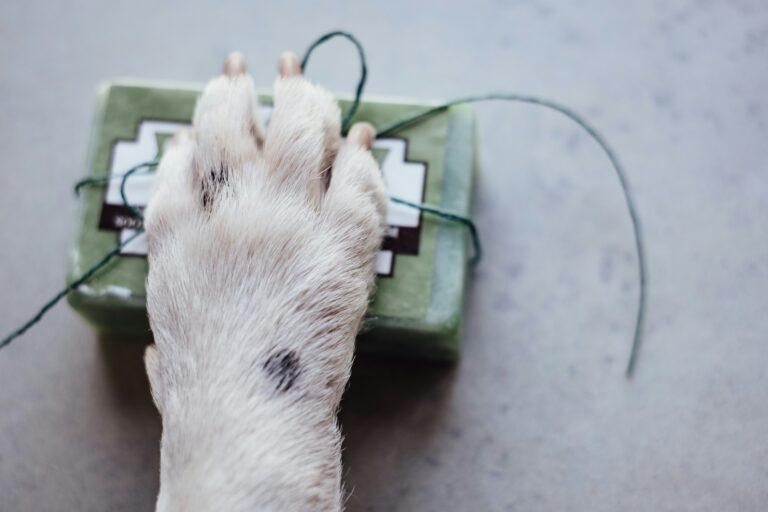For the love of our tiny paws, there’s an essential need to create a secure home environment suitable for their unique needs. The intrigue of small dog breeds often goes beyond their cute and cuddly looks. While they charm their way into our hearts, it’s our responsibility to ensure their safety. This thoughtfully curated content is a comprehensive guide to creating secure home environments for small breeds, addressing their specific needs and challenges in an in-depth manner.
The safety of our little furry friends becomes paramount considering their size, physical capabilities, and their curious nature. As they navigate their way around the house, there are potential hazards they could encounter, making it crucial to tailor their surroundings accordingly. This piece offers practical insights on effectively baby-proofing your home for your small breed dogs, focusing on the different areas of your home, and the steps you can take to minimize risks and maximize safety.
By the end of this insightful journey, you will be equipped with a wealth of information about how to keep your beloved small breeds safe. From understanding their unique behavioral traits to tweaking your home décor and layout, every detail has been considered and included in this guide. So, gear up for an enlightening exploration into creating an optimal and secure home environment for your small breed dogs, because at the end of the day, their safety is our utmost priority. 🐾 🏡 🐶

Understanding the Vulnerabilities of Small Breeds
When creating a safe home environment for small breeds, it’s crucial to recognize their unique vulnerabilities. Due to their small size and delicate build, these tiny companions face different dangers compared to their larger counterparts. Understanding these risks is the first step towards building a more secure and nurturing environment that supports their physical safety and emotional well-being.
Small breed dogs, such as Chihuahuas, Yorkies, and Pomeranians, have bones that are more fragile, making them susceptible to fractures and joint injuries from even minor falls or rough handling. Unlike larger breeds, a simple jump off a couch or an accidental step by a human can result in serious injury for a small dog. This heightened physical sensitivity necessitates extra caution and proactive measures to keep them safe.
In addition, small breeds are naturally more curious and agile, often exploring tight spaces or squeezing into small areas around the house. This curiosity, while endearing, can sometimes lead to accidents, such as becoming trapped behind appliances or under furniture, where they could suffer injuries or extreme stress.
Environmental factors, such as extreme weather conditions, also affect small breeds more significantly. Their small body mass makes it harder for them to regulate their temperature, leaving them vulnerable to hypothermia in cold weather or overheating during hot days. Protective clothing, temperature control, and attentive care are essential in mitigating these risks.
Furthermore, due to their stature, small dogs are often overlooked in busy households. They can be accidentally knocked over by children, stepped on in crowded areas, or even harmed by falling objects from tables and counters. Recognizing these vulnerabilities allows owners to implement a set of preventive measures that safeguard their small companions while also maintaining a happy and active household.
Recognizing Potential Hazards in the Home
When assessing the safety of your home for small breed dogs, it’s important to be thorough and think from their perspective. Every room presents its own set of challenges and potential hazards. Here’s a detailed look into common dangers and how you can address them:
Choking Hazards
Small dogs are at higher risk of choking because many objects around the house are the perfect size for accidental ingestion. Items such as buttons, coins, rubber bands, jewelry, socks, and small children’s toys can easily become lodged in a small dog’s throat.

Preventive Tips:
- Keep floors clear of small objects, especially in areas where your dog frequently roams.
- Invest in appropriately sized toys that are too large to swallow but small enough for them to play with comfortably.
- Regularly inspect toys for wear and tear, and discard broken or small pieces promptly.
Tripping Hazards
Tripping hazards not only pose a risk for your dog but also for you, potentially leading to accidents where the dog gets stepped on or injured.
Preventive Tips:
- Keep walkways free of clutter such as shoes, bags, and children’s toys.
- Secure loose wires using cable organizers or hide them behind furniture.
- Use non-slip mats in areas with hardwood or tile floors to provide better traction for small paws.
Poisonous Substances
Many everyday household substances are toxic to dogs, particularly small breeds whose bodies are less capable of handling toxins even in small quantities.
Common Household Toxins:
- Cleaning supplies
- Human medications
- Certain foods like chocolate, grapes, onions, and xylitol (found in sugar-free products)
- Indoor plants like lilies, aloe vera, and poinsettias
Preventive Tips:
- Store all chemicals and medications in high cabinets out of reach.
- Avoid feeding your dog table scraps without knowing the ingredients.
- Choose pet-safe plants or position potentially dangerous ones in inaccessible areas.
High Surfaces
Sofas, beds, and stairs can present a serious falling hazard for small dogs. They may attempt to jump up or down from furniture, risking injuries to their fragile limbs or spines.
Preventive Tips:
- Provide pet ramps or stairs to help them safely access higher surfaces.
- Train your dog to use these aids consistently.
- Consider setting up a designated safe zone with low, easily accessible furniture.
Additional Hidden Hazards
Besides the more obvious dangers, there are several hidden hazards that small dog owners should consider:
Appliances
Small dogs can easily sneak behind or under large appliances such as washing machines, dryers, refrigerators, and ovens. These areas can be dangerous due to moving parts, heat, or electrical hazards.
Preventive Tips:
- Block access to behind appliances with barriers or furniture.
- Always check appliance areas before starting a load or cooking.
Recliners and Rocking Chairs
Furniture that moves, such as rocking chairs and recliners, can pinch or crush a small dog if they are lying underneath or near them without being noticed.
Preventive Tips:
- Always check around such furniture before sitting or reclining.
- Encourage your dog to rest in a designated safe bed or area.
Trash Cans
Trash cans are a source of tempting smells and dangerous objects, such as bones, sharp cans, and spoiled food.
Preventive Tips:
- Use dog-proof trash cans with secure lids.
- Keep trash cans inside cabinets if possible.
Psychological and Emotional Hazards
Safety isn’t just about physical threats. Emotional well-being is equally important. Small dogs can feel easily overwhelmed in chaotic or noisy environments, leading to stress, anxiety, and behavioral problems.
Stress Triggers for Small Breeds:
- Loud noises like fireworks or thunderstorms
- Overcrowded spaces or constant human traffic
- Aggressive or overly playful larger pets
Preventive Tips:
- Create a calm, quiet refuge where your small dog can retreat when they feel overwhelmed.
- Use calming aids like diffusers with dog-safe pheromones.
- Introduce socialization gradually and monitor interactions with larger animals.
Proactive Safety Habits
Establishing proactive safety habits will ensure ongoing protection for your small dog:
- Perform a “paw-level inspection” regularly: Get down to your dog’s height and view the environment from their perspective.
- Conduct seasonal safety checks: Holiday decorations, summer pool areas, or winter heating equipment introduce new hazards.
- Teach children about pet safety: Encourage gentle handling, appropriate play, and awareness of your dog’s space.
- Create and maintain an emergency plan: Know where your dog’s safe space is during events like earthquakes, storms, or home emergencies.
Final Thoughts
Understanding the vulnerabilities and recognizing potential hazards that small breed dogs face is essential for creating a loving, secure home. Their tiny size brings unique challenges, but with thoughtful planning and daily vigilance, you can build an environment where they thrive both physically and emotionally.
Each preventive measure you take is a step toward a safer, happier life for your beloved small companion. By adapting your home with their needs in mind, you not only protect them but also strengthen the bond of trust and affection that defines the beautiful relationship between a small dog and their human. 🐾🏡💕
Creating a Secure Environment: Physical Measures
One of the primary ways to create a safe environment for small breeds is through physical measures. These include changes to the physical layout of your home and the use of pet-friendly equipment.
Pet gates can prevent small breeds from accessing dangerous areas such as the kitchen or staircases. Look for gates that are sturdy and have small gaps to prevent them from squeezing through. Non-slip rugs can also help prevent slips and falls, especially on hard surfaces like tiles or hardwood floors.
Ensure that all windows and doors are secure to prevent escape or accidental falls. For windows, consider installing safety screens or window guards. For doors, use pet doors with locking mechanisms or position them in areas where there’s no immediate danger outside.
Choosing the Right Equipment
Choosing the right equipment is another crucial aspect of home safety for small breeds. Opt for pet beds and furniture that are low to the ground to minimize the risk of falls. Select toys that are appropriate for their size and avoid those with small parts that can be swallowed.
When it comes to feeding, opt for shallow bowls that are easy for small breeds to eat and drink from. Additionally, choose harnesses over collars for walks to prevent injuries to their delicate neck and throat.
Creating a Secure Environment: Behavioral Measures
Apart from physical modifications, behavioral measures also play a crucial role in ensuring a safe home environment for small breeds. These include training your pet and educating family members.
Training your small breed to obey commands can prevent accidents and ensure they stay safe. For instance, teaching them to “stay” can prevent them from running out the door or jumping off high surfaces. Crate training can also be beneficial for times when they need to be secured, such as during transportation or when guests are over. Teaching recall commands like “come” and “leave it” can also prevent dangerous situations when your dog encounters potential hazards.
Educating family members about the special needs and vulnerabilities of small breeds is also crucial. This includes teaching children to handle them gently, supervising their interactions, and making sure everyone in the household understands the importance of keeping doors closed and floors free of hazards to protect your tiny companion.
Using Technology for Enhanced Safety
Technological advancements can aid in creating a secure environment for small breeds. Examples include pet cameras for monitoring their activities when you’re not at home and GPS trackers for locating them in case they get lost. Smart feeders can ensure they get the right amount of food even when you’re away, and automatic pet doors can control their access to the outdoors.
Ensuring a Safe Outdoor Environment
Creating a secure outdoor environment is equally important for small breeds. This includes ensuring the yard is securely fenced and checking for potential dangers like toxic plants, chemicals, or small gaps they could squeeze through.
Provide a sheltered area where they can retreat to in case of adverse weather conditions. Use a leash or harness during walks and keep them close to you to prevent encounters with larger animals or other potential dangers.
Conclusion
In conclusion, creating a secure home environment for small breeds requires understanding their unique vulnerabilities and taking proactive measures to minimize risks. This involves making physical modifications to your home, choosing the right equipment, training your pet, and using technology for enhanced safety. With these steps, you can ensure a safe and comfortable environment for your small breed pet.
Ensuring the physical and emotional safety of these little creatures is crucial for their overall well-being. By eliminating potential dangers, like choking hazards and toxic substances, you are fostering a more secure environment for them. Investing in pet-friendly furniture and secure fences can significantly minimize risks and prevent accidents. Incorporating interactive toys and comfortable bedding can enhance their quality of life. Regular veterinary checks are essential to keep health issues at bay. Let’s pledge to create safe, loving, and nurturing homes for our furry friends! 🐾🏡💕



